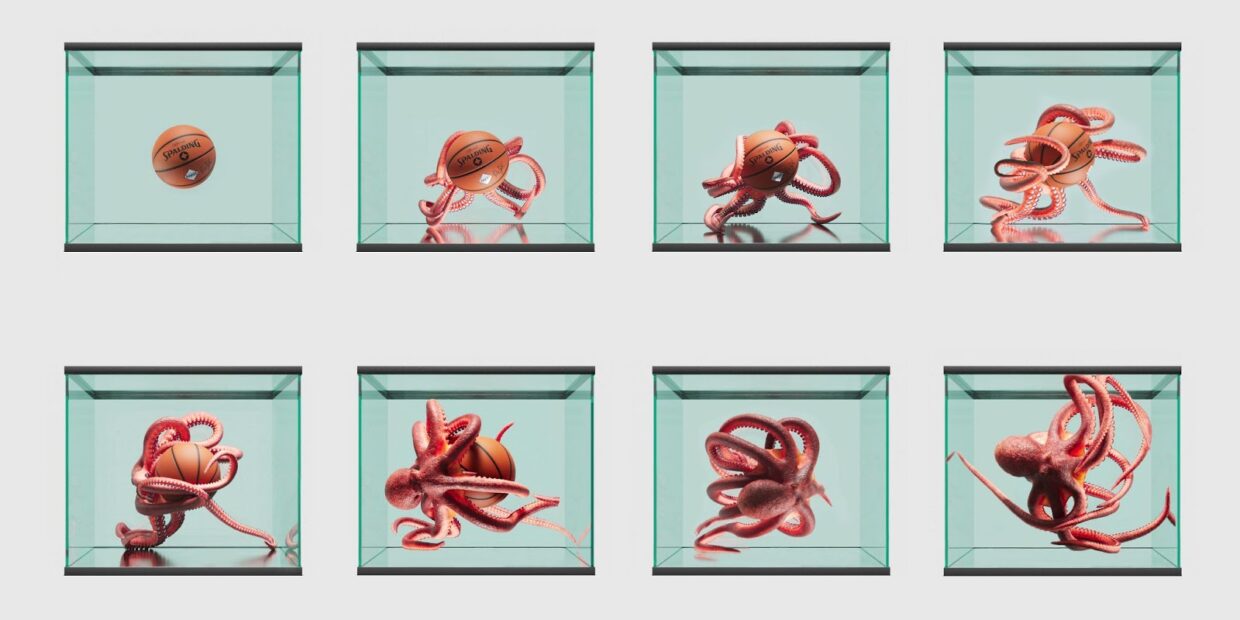From Dada to digital: Discussing NFTs and Art World Disruption with Renowned Artist and Director Marco Brambilla
Jun. 17, 2021
By Luke Whyte
In 1917 Marcel Duchamp submitted a sculpture entitled Fountain to a juried exhibition in New York City. The artwork, a urinal signed ‘R. Mutt’, was rejected but spawned a serious conversation amongst artists, collectors and curators about what is and isn’t art. This dialogue could not be more relevant today and is at the crux of Marco Brambilla’s newest NFT artwork Partial Equilibrium.
For his inaugural launch with SuperRare, media artist Marco Brambilla draws inspiration from a long history of readymade artists who created works to disrupt the art world and question what it means to be an artist. Now, a century after Duchamp’s urinal, cryptocurrency and NFTs are inciting an entirely new debate. In this digital readymade Brambilla appropriates, interrogates and recontextualises the first American readymade — Jeff Koons’ One Ball Total Equilibrium Tank. Created in 1985, the work immortalized the Spaulding basketball, floating suspended in an aquarium, as a symbol of opportunity and prosperity.
Brambilla’s NFT Partial Equilibrium confronts viewers with the dismantling of Koons’ art object and makes way for a new one. Known as a creature in both Norse and Greek mythology as a symbol of destruction, an Octopus appears to overtake the original structure entirely, disrupting the basketball’s delicate state of equilibrium within the aquarium. As we watch the Octopus engulf the artwork we are reminded of the disruptors who paved the way for a new art form to exist and flourish.
Marking the minting of Partial Equilibrium, SuperRare sat down with Brambilla to discuss his work, drive and vision for the future of digital art.


LW: Can you talk a little bit about this latest piece, Partial Equilibrium, and how it fits into the history of readymade art, especially in the context of bringing readymade to the digital, NFT space?
MB: Marcel Duchamp created the concept of the readymade, but when he submitted his urinal to a show in New York City in 1917, it was rejected.
The migration of art into the virtual is very much in the spirit of the readymade, and like Duchamp, NFTs are disrupting our understanding of art making and the art market as we know it today.
I am exploring the effect of this kind of disruption through a series of NFTs. My first work in the series is called ‘Partial Equilibrium’ and is based on the first American readymade by Jeff Koons which presented a single basketball floating in an aquarium. In ‘Partial Equilibrium’ viewers watch as an Octopus completely takes over Koon’s original artwork – superimposing a new narrative on the artwork.
I’m interested in the history of how recognizable objects can become art and the future of how artworks are being transformed through digital metamorphosis.
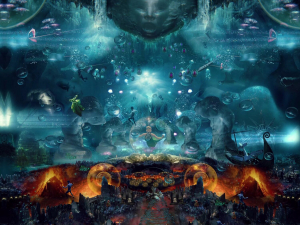
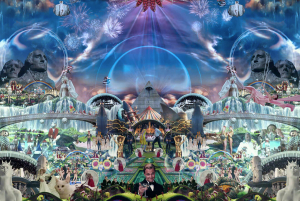
LW: What excites you about the CryptoArt, NFT space, the direction it could take us and the new opportunities that presents?
MB: My first impression was how dynamic and fluid the medium can be. The frequency and range at which artists can put work into the world is inspiring. I think the next phase will lead to generative artworks that can react to real-time metrics – engaging and responding to a system of transacting itself. With smart contracts and continuously evolving technologies, this is the only medium where anything is possible. It’s not adapting to an existing gallery or museum structure, but building a system of its own. NFT has the potential to be a transformative medium and like any conceptual movement can extend our understanding of art itself.

LW: Building on the question above, do you see art as a reflection of the culture in which it is created and, if so, do you imagine that living in an increasingly virtual world – the march toward the Metaverse – will be reflected by artists via new techniques and mediums?
MB: The Dada movement of the early 20th century was all about the disruption of the traditional. Today, an entire generation of artists and collectors arguably spend more time in the digital realm than the physical. This speaks directly to how we interact and engage with every kind of visual. Dada was all about the ephemeral and today some of us are living in an entirely ephemeral state – the Metaverse.
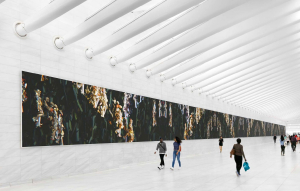
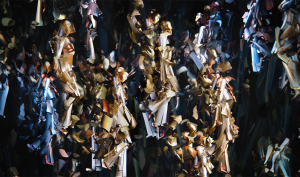
LW: Can you talk a little bit about your path to becoming the artist you are today? What led you into the world of directing and what has driven you as an artist, particularly at the intersection of 3D technology, pop culture and art history?
MB: Through my work I’ve always explored the impact of emerging technologies on our collective consciousness. In the late 90’s I worked with Neal Stephenson on adapting Snowcrash into a feature film, in 2002, I made Halflife which was based on the MMOG online game Counter-Strike and more recently made Sync, a video installation deconstructing the online pornography. These mediums have now become a part of our cultural history, a history that is now extending into the Metaverse.
Source: SuperRare
